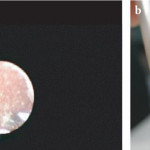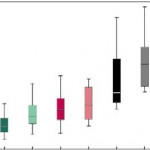Editorial: PCA3 assay in the MRI/US fusion TBx era: a future to believe in
Men with persistently elevated serum PSA levels after a negative first TRUS-guided systematic prostate biopsy (SBx) represent a great diagnostic challenge. To meet this challenge, urologists need new imaging methods and biomarkers for use in daily clinical practice. The study by De Luca et al. [1] in the present issue of BJUI contributes further data to a growing body of literature addressing the role of prostate cancer gene 3 (PCA3) score and MRI/ultrasonography fusion-targeted prostate biopsy (TBx) in the detection of prostate cancer (PCa) in men who had undergone a previous negative SBx.
De Luca et al. retrospectively analysed data from 282 men undergoing a TBx after a previous negative SBx and PCA3 urine assay for an ongoing suspicion of PCa. They found that the PCA3 score was significantly higher in patients with a positive TBx as compared to those with a negative TBx (121 vs 56; P < 0.001). Futhermore, PCA3 was significantly associated with Prostate Imaging Reporting and Data System (PI-RADS) group (The median PCA3 scores for PI-RADS groups 3, 4 and 5 were 58, 104 and 146, respectively; P = 0.006). Similarly, an increasing PCA3 score was associated with a worse Gleason score (GS) after TBx. These findings are not necessarily novel, but rather are consistent with some of the previous literature [2, 3]. Conversely, Kaufmann et al. [4] did not find any association between PCA3 score and either PI-RADS group or GS. Importantly from a clinical perspective, the authors of the present study observed a statistically significant association between PCA3 score and the ‘indeterminate’ PI-RADS grade III subgroup, thus allowing for the possibility that the combined use of these two diagnostic tools could prevent unnecessary biopsies.
Prostate biopsies are associated with discomfort, anxiety and severe complications. Repeated SBx also results in a greater economic cost and has been associated with overall low PCa detection rates (being negative in almost 80% of examined men). The recent literature has therefore focused on additional tests with the goal of preventing unnecessary biopsies and increasing the probability of detecting PCa during a repeat biopsy. Since its introduction in clinical practice, the urinary PCA3 assay has shown promising results for PCa detection, staging and prognosis; however, recent studies have shown high variability in PCA3 sensitivity and specificity, which can be explained by the low diagnostic performance of SBx in detecting PCa. MRI-guided TBx has shown higher detection rates than SBx and thus could be of clinical utility in improving PCA3 prognostic accuracy in detecting PCa in men with previous negative SBx. De Luca et al. [1], using a univariate logistic regression model to estimate the effect of PCA3 score on TBx results, found that a 1-unit increase in PCA3 score was associated with a 2.4% increase in the odds of having a positive TBx result (odds ratio [OR] 1.024; P < 0.001). The accuracy of this model was 76.2%, with a sensitivity of 82.3% and specificity of 68.5%. A multivariate logistic regression model showed that PI-RADS group ≥4 (OR 10.85) and a PCA3 score >80 (OR 7.17) were independent risk factors for a positive TBx (all P < 0.001). The authors concluded that TBx improved the diagnostic and prognostic performance of the PCA3 score for PCa. Importantly, considering only the ‘indeterminate’ PI-RADS grade III subgroup, a 1-unit increase in PCA3 score was associated with a 2.2% increase in the odds of having a positive TBx (OR 1.022; P < 0.001). These findings are consistent with recent literature showing that the use of multiparametric (mp)MRI to direct biopsies can significantly improve PCA3 score sensitivity [5]. Similarly, Busetto et al. [2] estimated the sensitivity and specificity for PCA3 test and mpMRI to be 68 and 49%, and 74 and 90%, respectively, for cancer detection after an initial negative biopsy, and concluded that mpMRI increased PCA3 score test accuracy.
Repeated prostate biopsy strategies for the suspicion of PCa remain one of the most controversial dilemmas in urology. The results of the present trial help strengthen the evidence in favour of the diagnostic role of the PCA3 score, which could aid the selection of patients for mpMRI. Large prospective trials are needed to confirm the association between PCA3, PI-RADS group and GS in men with PCa. Interestingly, De Luca et al. believe that PCA3 score could be part of a ‘fusion-biopsy era’ in the not-so-distant future. Should the positive correlation between PCA3 and GS be confirmed, PCA3 could have a role in the selection of candidates for active surveillance, and in predicting disease progression during active surveillance follow-up.



